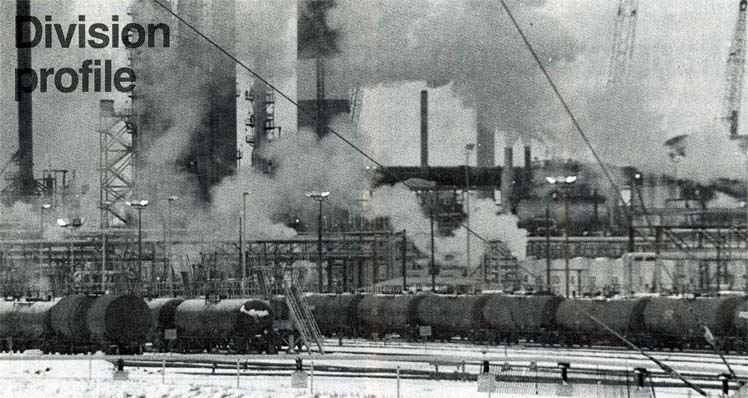
1982-1984
|
|
Volume 13
Number 4 March 9, 1983 |

|

When the ice fog rolls in along the North Saskatchewan River valley and Edmonton sinks into its annual deep freeze, it's not difficult to understand the challenges faced by the area's earliest pioneers.
It took a special kind of pioneering spirit to establish the nation's most northerly provincial capital as the "gateway to the north".
And, almost from the outset, rail transportation has played a pivotal role in the development of resource-rich northern Alberta.
Almost a century before the arrival of the Canadian Pacific Railway, this remote fur-trading post was already showing signs of becoming one of Western Canada's primary resource and distribution centres.
By the early 1800s, Edmonton had evolved from a couple of frontier forts into a bustling mercantile centre.
Still, the going was tough, particularly for the early settlers who had to make their arduous journey west bumping along across the prairies in Red River carts.
But, when the CPR constructed a branch line from Calgary in 1891, Edmonton's era of relative isolation ended and the wheels were set in motion for major expansion.
With the arrival of the railway came thousands of new immigrants who established Edmonton as a major agricultural centre. In the space of two years, the population grew from a few hundred to more than 5,000.
And, with the great Klondike gold rush of 1897-1898, thousands more swarmed through the former fur-trading post.
With the arrival of each new settler, Canadian Pacific's role increased in importance. The company was part of the pioneering spirit, a spirit that continues today.
The Alberta North Division, headquartered at Edmonton, is in the midst of a dramatic economic boom, fueled by the "black gold" that made Edmonton the oil capital of Canada.
Today, the Edmonton area contains 80 percent of Alberta's major oil wells and 95 percent of the province's refining production. And, with energy self-sufficiency becoming increasingly critical, the next two decades will see an unprecedented level of investment and economic activity.
Ever since the first major oil well, Leduc Number 1, gushed forth on 13 Feb 1947, CP Rail has worked alongside the roughnecks and drilling rigs, supplying servicing equipment and transporting crude oil.
With the construction of "Refinery Row" and the maze of pipelines CP Rail adapted to the changes. Crude oil shipments declined but were quickly replaced by the movement of refined petroleum products to a wide variety of domestic and international markets.
Today, the petrochemical industry accounts for the lion's share of Alberta North's revenue. And, as the industry expands, CP Rail's commitment to northern Alberta will continue.
The construction of the new Scotford Spur in Strathcona County has already opened many new opportunities for the railway and many more projects are currently underway to meet the challenges presented by northern Alberta's burgeoning resource-based industries.